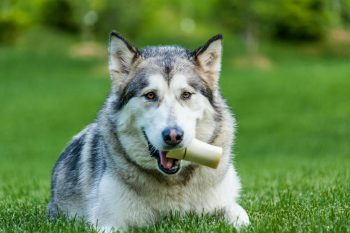Alaskan Malamutes, one of the oldest Arctic sled dogs, are renowned for their strength and endurance, historically used for heavy freight transport across harsh frozen landscapes. With their majestic wolf-like appearance and robust build, Malamutes are not just powerful working dogs but also affectionate and loyal companions. Despite their friendly demeanor, they exhibit unique behaviors that reflect their specialized breeding and survival instincts in extreme environments. These habits can be fascinating yet challenging for their owners, highlighting the breed’s complex nature and need for specialized care. Understanding these behaviors is crucial for anyone looking to share their home with a Malamute, as it requires a commitment to meet their physical and psychological needs adequately. This article explores seven of the most unusual habits of Alaskan Malamutes, providing insights into their origins and offering tips on how to effectively manage these traits.
1. Intense Digging
Alaskan Malamutes have a notable tendency to dig, a behavior that can be traced back to their need to create shelters or unearth food in snowy environments. This instinctual digging can result in sizable holes in backyards, which can be problematic for homeowners. To manage this behavior, providing a designated digging area in the yard can help, as well as ensuring that Malamutes have ample exercise and mental stimulation to deter them from digging out of boredom or excess energy.
2. Howling Rather Than Barking
Unlike many other dog breeds, Malamutes rarely bark. Instead, they are known for their soulful howling, which can be quite loud and melodious. This form of vocalization is a throwback to their pack-living days, used as a means of communication over long distances in the Arctic. Owners can manage excessive howling by providing plenty of social interaction and engagement to keep their Malamutes happy and less inclined to vocalize out of loneliness or anxiety.
3. Independent Thinking
Alaskan Malamutes are known for their independence, often described as stubborn or willful. This trait was essential in survival settings where dogs might need to make decisions independently from their human handlers. While this intelligence is admirable, it can pose challenges in training. Consistency, patience, and a firm yet positive approach to training are necessary to effectively work with a Malamute’s independent nature.
4. Strong Prey Drive
Due to their history as hunters, Alaskan Malamutes have a strong prey drive. This can lead to chasing small animals, which can be a concern for owners with other pets or those living in areas with wildlife. Early socialization, obedience training, and keeping Malamutes securely enclosed or leashed can help manage this instinct.
5. Pack-Oriented Social Behavior
Malamutes are intensely pack-oriented, which influences their interactions with other dogs and their human family members. They thrive on strong leadership and clear hierarchy within the home, which helps prevent dominance issues and promotes harmony. Establishing oneself as a calm, assertive leader and providing structured group activities can reinforce pack cohesion and social stability.
6. Resistance to Heat
Malamutes have a dense double coat designed for extreme cold, which makes them highly susceptible to overheating in warm climates. They can exhibit unusual habits to cool down, such as digging cool pits or seeking shaded areas. Owners should ensure Malamutes have access to cool, shaded places and limit exercise during hot weather to early morning or late evening to prevent heatstroke.
7. Food Guarding
Food guarding is another behavior seen in some Malamutes, likely stemming from their historical need to compete for resources. This can be managed through training that focuses on desensitizing them to the presence of people and other animals around their food. Training should involve teaching them that the approach of a human to their food bowl is a positive event, not a threat.
Alaskan Malamutes are fascinating dogs with rich histories and unique behaviors that require understanding and specific care. Their unusual habits, from intense digging to strong prey drives, highlight the importance of providing an environment that respects their heritage and meets their needs. With proper training, socialization, and care, Malamutes can be loving and loyal companions, fully integrated into the lives of their dedicated owners.
The post The 7 Most Unusual Habits of an Alaskan Malamutes appeared first on iHeartDogs.com.

